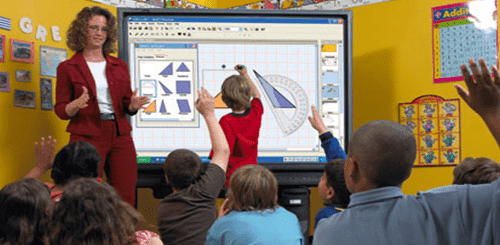(510) 705-1915
Call us today!
The Digital Renaissance: How Technology is Transforming Education

Introduction
The advent of technology has brought about a seismic shift in the field of education. In the past decade, we have witnessed an unprecedented transformation in the way knowledge is disseminated, accessed, and absorbed. From online learning platforms to personalized learning experiences, technology has revolutionized education, offering students and educators a dynamic and immersive learning landscape. In this blog, we will explore the multifaceted ways in which technology is reshaping education, ushering in a new era of learning.
Online Learning Platforms

One of the most significant developments in education is the proliferation of online learning platforms. These platforms, such as Coursera, edX, and Khan Academy, have democratized education by making a wealth of information accessible to anyone with an internet connection. Learners can now access courses from renowned institutions and experts from around the world, breaking down geographical barriers. This flexibility has empowered individuals to pursue their passions and careers at their own pace and convenience.
Personalized Learning

Personalized learning is a game-changer in education. Technology enables educators to tailor content and teaching methods to the individual needs and preferences of each student. Adaptive learning systems use data analytics to assess a student’s strengths and weaknesses, providing customized content and feedback. This approach not only enhances student engagement but also boosts retention and understanding of the material.
Virtual Reality (VR) and Augmented Reality (AR)

Virtual Reality and Augmented Reality are transforming traditional classrooms into immersive learning environments. VR allows students to explore historical sites, dive into the depths of the ocean, or even journey to outer space, all from the comfort of their classroom. AR, on the other hand, overlays digital information onto the physical world, offering interactive experiences. These technologies make learning more engaging and memorable.
Gamification

Gamification leverages the principles of game design to enhance education. It introduces elements such as competition, rewards, and progression to learning activities, making them more enjoyable and motivating. Educational games can teach various subjects, from math and science to history and language, in an engaging and interactive manner. Students not only acquire knowledge but also develop problem-solving and critical-thinking skills.
Collaboration and Communication Tools

Technology facilitates collaboration among students and educators across the globe. Tools like Google Workspace for Education and Microsoft Teams enable seamless communication and collaboration, breaking down geographical barriers. Students can work together on projects, participate in virtual discussions, and access resources from anywhere, promoting a global perspective and diverse learning experiences.
Artificial Intelligence (AI)

AI-powered educational tools are redefining the role of educators. Chatbots and virtual tutors can provide instant assistance to students, answering questions and offering guidance 24/7. AI can also analyze vast amounts of data to identify learning trends, enabling educators to refine their teaching strategies and improve learning outcomes.
Accessibility and Inclusivity

Technology has opened doors for individuals with diverse learning needs. Screen readers, speech-to-text software, and other accessibility tools ensure that educational resources are inclusive for all. Additionally, online platforms have made it possible for individuals with physical disabilities or those in remote areas to access quality education.
Conclusion
Technology’s impact on education is nothing short of revolutionary. From online platforms to personalized learning, virtual reality to gamification, the digital transformation is enabling a more flexible, engaging, and inclusive educational experience. While challenges like the digital divide and data security remain, the potential for technology to continue reshaping education is boundless. As we move forward, it is crucial for educators, policymakers, and technology developers to collaborate in harnessing the full potential of technology to empower learners and prepare them for the challenges of the 21st century. The digital renaissance in education has only just begun, and the possibilities are limitless.
FAQs (Frequently Asked Questions)
These FAQs reflect the evolving landscape of technology in education, addressing both its opportunities and challenges as it continues to transform the way we learn and teach.




Welcome to American Tech, Inc., your premier destination for top-tier computer repair and technology services. Nestled in the heart of California, we proudly serve residential and business clients across the East Bay Area, San Francisco, San Jose, and Sacramento.
